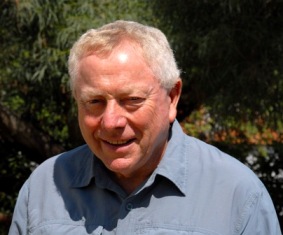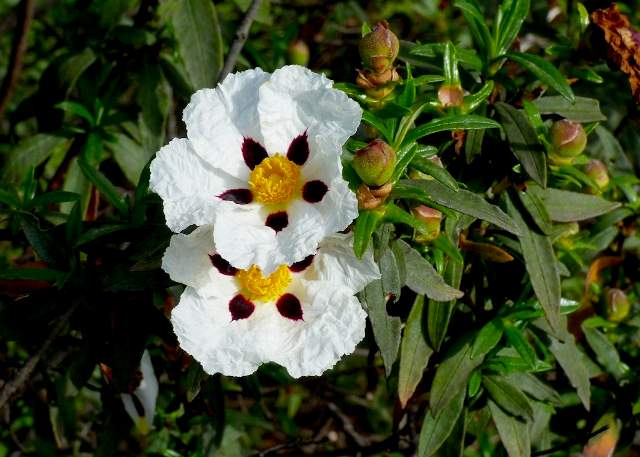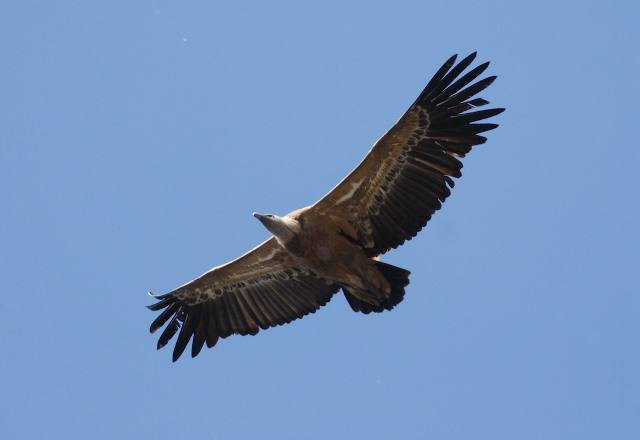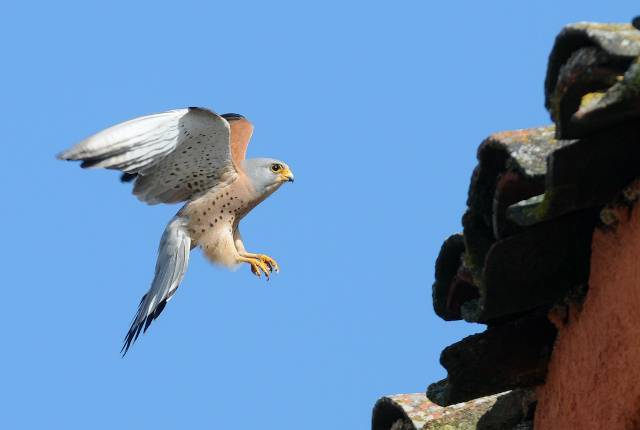Out with Papa-figos

Clive Viney - co-author of Algarve Wildlife - the natural year
Papa-figos (which literally translates as fig eater) is the Portuguese name for the Golden Oriole, one of the iconic visiting birds of the Algarve. Clive Viney is the co-author of Algarve Wildlife - the natural year, and now, under the guise of Papa-Figos, chronicles his finds, thoughts and feelings while walking in the Algarve countryside throughout the natural year. Look out for his regular updates, illustrated by his fellow co-author and photographer, Ray Tipper, who has kindly provided some of the photographs that illustrate these articles by clicking through from the links below.
Pre-prairies and Castro Verde – 27th March 2022
Mike was returning to Hampshire the following day and the wet weather had broken, so with John we enjoyed a rare Sunday field trip. Our wives, having acquiesed, headed for a traditional Sunday lunch together. Mike kindly drove in his hired car, which allowed me to enjoy the outing even more.
The clocks had gone forward that night, so we gathered at seven, which would have been six the day before. Sunrise was just before seven-thirty. We enjoyed the expected fine weather all day but north of the Algarve in the Baixo Alentejo it was hazy sunshine at best and a southeast wind kept the temperature down.
It was soon obvious that on the hillsides Gum Cistus Cistus ladanifer and Southern Furze Genista hirsuta were reaching their flowering zenith and much of the grassland and fallow fields were coloured by swathes of Purple Viper’s Bugloss Echium plantagineum.

Gum Cistus

Purple Viper’s Bugloss
First stop was the Ponte do Vascão, where a singing but silhouetted Black Redstart had us guessing. I didn’t doubt that both it and a spanking male Blue Rock Thrush were breeding in this attractive gorge Following recent rain the river, which splits the Algarve from the Baixo Alentejo, was in full flow.
Next was the road from Espírito Santo to Besteiros, which, as always, gave us our first taste of the Pre-prairies, the name I give to these open grasslands south of the vast steppes of Castro Marim. Corn Buntings, Thekla’s Larks, Stonechats lined the road and we added the first of many Iberian Grey Shrikes and Spanish Sparrows, Wood Pigeons, a Carrion Crow, a male Woodchat Shrike and our only migrant Northern Wheatear. A Stone-curlew called. Two Iberian Green Woodpeckers explored a a tall concrete post and we enjoyed a close view of the first of three Great Spotted Cuckoos seen during the day. Best, though, was a pair of Calandra Larks. A huge, orange, Spanish Slug crossed the road.
Patience was required to see a Dartford Warbler at Ray Tipper’s site for this species. There, I always enjoy the short uphill stroll through banks of citrus to the old random-stone ruins covered in Sunburst Lichen. These dwellings must date back centauries. We added Short-toed Eagle, Jackdaw, Woodlark and a song flighting Greater Short-toed Lark.
The attractive small lake off the Quinta to Eirinha road was full and gave us few birds.
Our much-anticipated coffee break was at the usual spot – the quiet riverside at Minas de Água Santa Morena. Here we scored with the expected Grey Heron, Crag Martins, Barn Swallows, Cetti’s Warblers, White Wagtail, Wren and our first singing Nightingales of the season. Two butterflies noted were Spanish Festoon and Black-eyed Blue.

Spanish Festoon
The irrigation reservoir near Alvares was full and although there was no sign of the hoped-for Collared Pratincoles, there was plenty of avian interest. On the lake was a raft of Red-crested Pochards (ten males and four females) and to our surprise three Mute Swans. Mute Swans are not thought to naturally occur in southern Portugal. The margins attracted Black-winged Stilts, a Little Egret, eight Spoonbills, and a Greenshank. Over the low hills that provide the backdrop were four Griffon Vultures, a Black Vulture, two or three Red Kites and several Ravens.

Griffon Vulture: Picture Ray Tipper: Licence enquiry...
As we entered the steppes, I asked Mike to drive past Corte Pequeno to the open country beyond where in December 2018, I’d seen wintering Common Cranes, several Great Bustards and had stunning views of a flock of Black-bellied Sandgrouse. Unfortunately, in the three years since, the road had been upgraded and fences erected making stopping and viewing impossible. All was not lost because we had wonderful views of a pair of newly-arrived Montagu’s Harriers, with the male perching on a post just in front of the car. Two Short-toed Eagles also put on a show.
A couple of years ago I was at the roadside Welcome to Castro Verde Sign with Mike when he spotted and photographed a Great Bustard (see Out with Papa-figos – 5th December 2019). I asked him to do the same today and in virtually the same spot he found no fewer than six males and nine attending females, which we ‘scoped and enjoyed. A nearby track gave us the anticipated Lesser Kestrels visiting a purpose-built kestrel house. Now in the afternoon the delightful miniature iris-like Barbary Nut Gynandriris sisyrinchium was in flower all along the track. The bird of the day was a superb and obliging second-year Spanish Imperial Eagle, a vulnerable species, perched on the earth dam of a nearby cattle pond (charca). It just sat there for us. When it got up and lazily flew it reminded me much of the Eastern Imperial Eagles that wintered in Hong Kong’s northwest New Territories.

A Lesser Kestrel visiting a purpose-built kestrel house: Picture Ray Tipper: Licence enquiry...
Then it was a late lunch of huge tosta mistas (toasted cheese and ham sandwiches) at the usual, friendly tasca in the centre of Castro Verde.
Access to the large irrigation reservoir near the Quinta Apariça rural hotel was now ungated and this large waterbody was open to public view. Unfortunately, Rollers had not yet arrived to use the specially provided nestboxes. Plenty of waterfowl needed to be sorted out, including Great Crested Grebes in full plumage, another Mute Swan and two exotic Egyptian Geese. A Quail quipped and I was pleased to see a large European Pond Terrapin hauled out. Flocks of smart Spanish Sparrows were everywhere.
Driving home we had a fly past of a pair of Great Bustards and along the Almodóvar to Mértola road I was amazed to see roadside signs warning of the presence of European Lynx. Quite what a motorist was supposed to do, I cannot say but on a positive note, it looked as if the reintroduction programme was working.

As John said in a subsequent email, ‘All visits to Castro Verde are special’. Including the two exotics John made our bird list 79, which was a good score for limited habitat and not chasing ticks.
Papa-figos
Tavira
18th March 2022